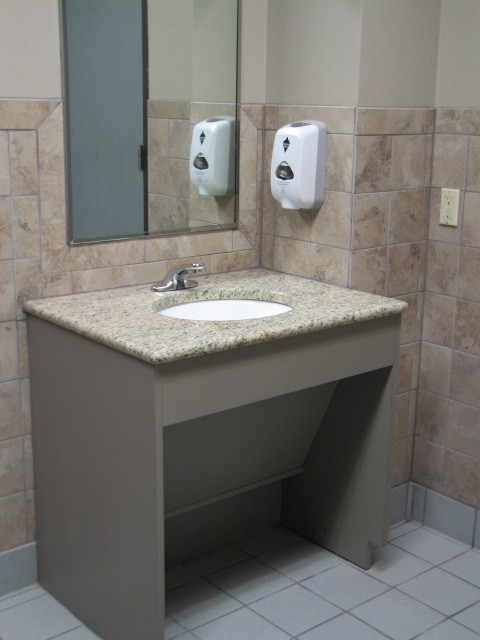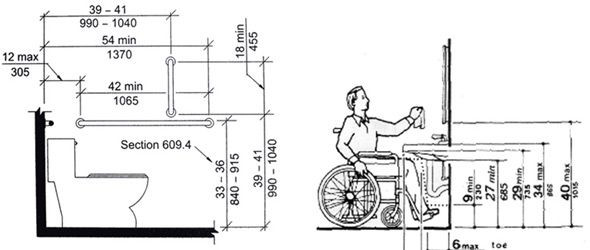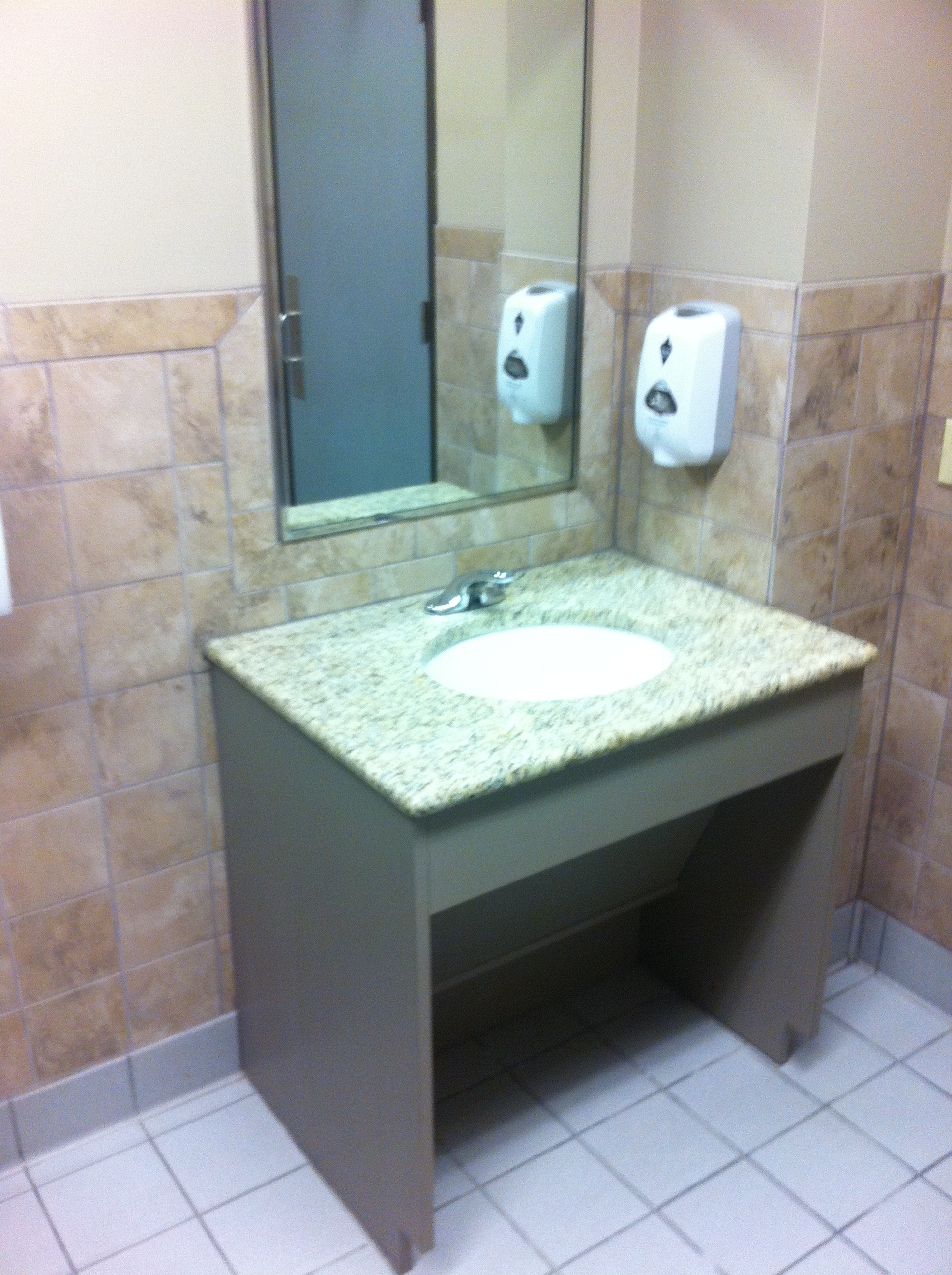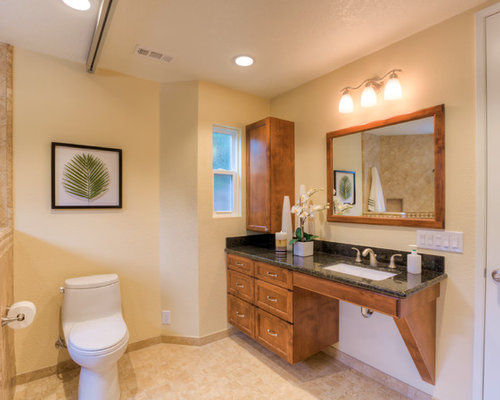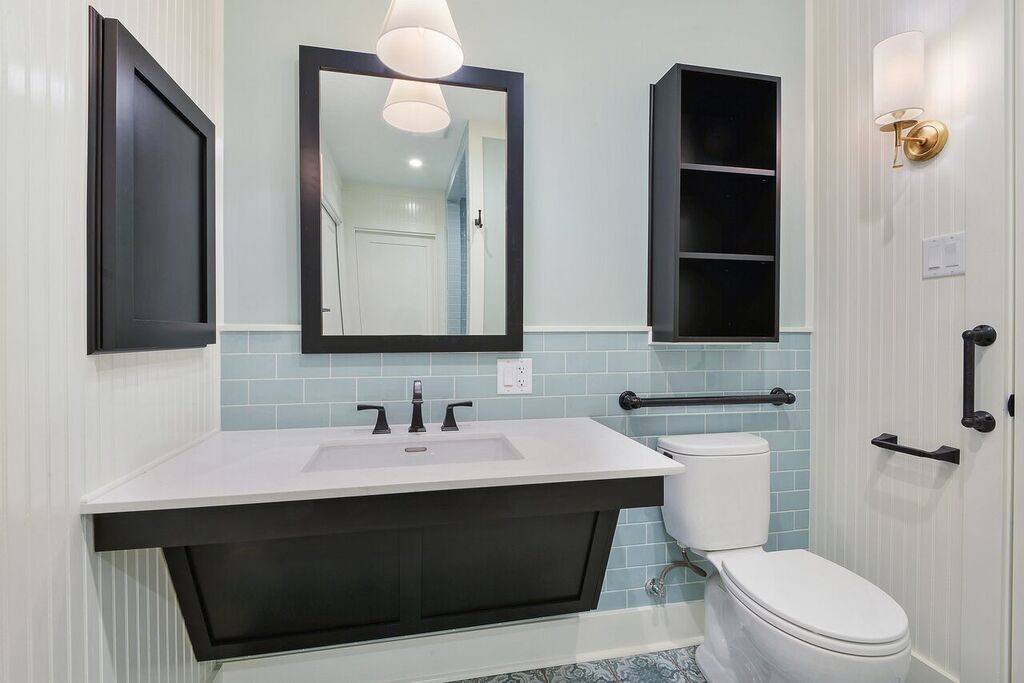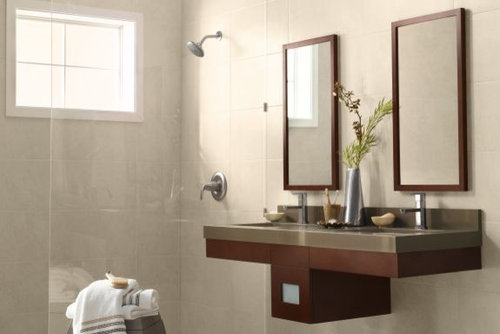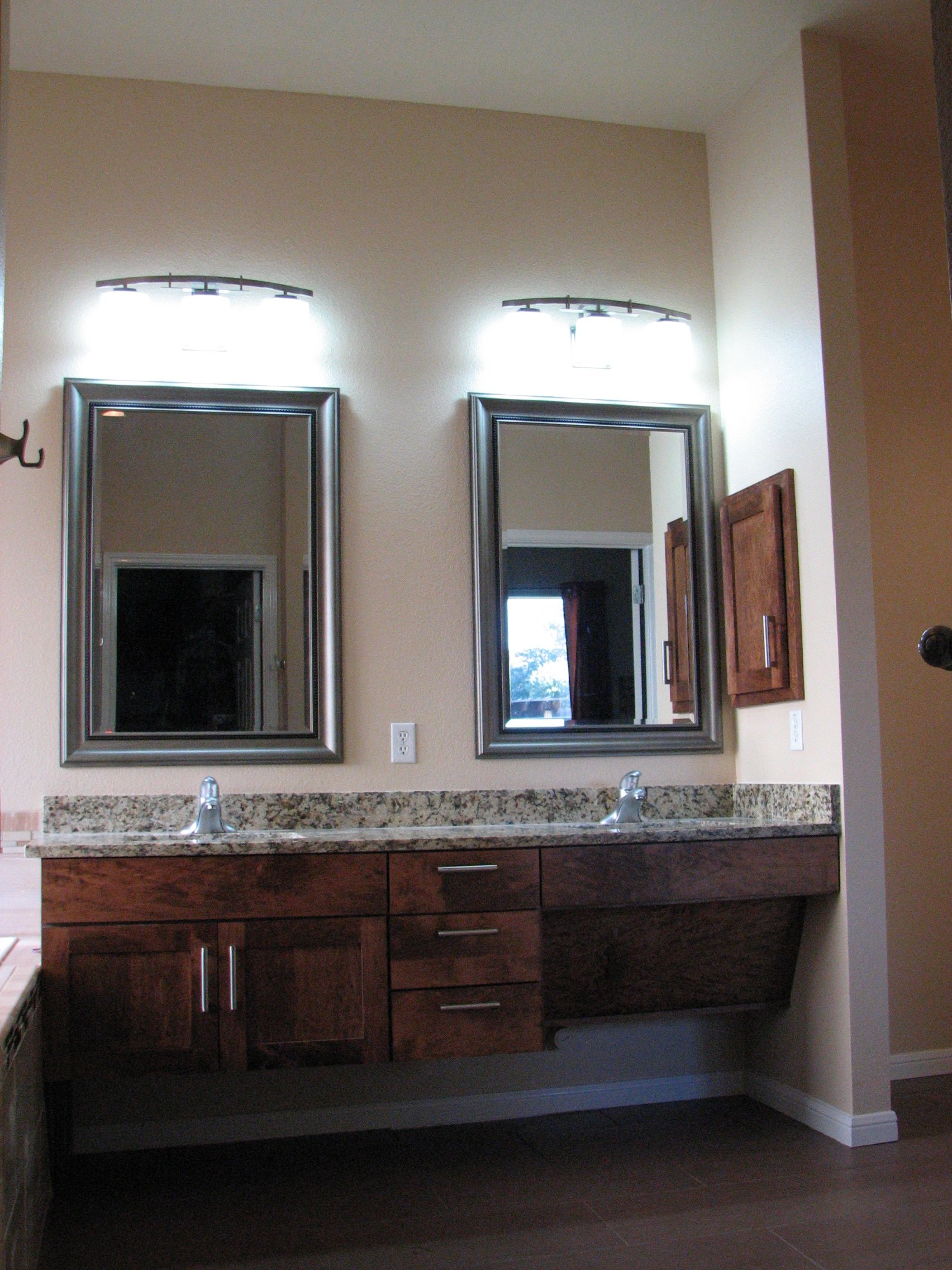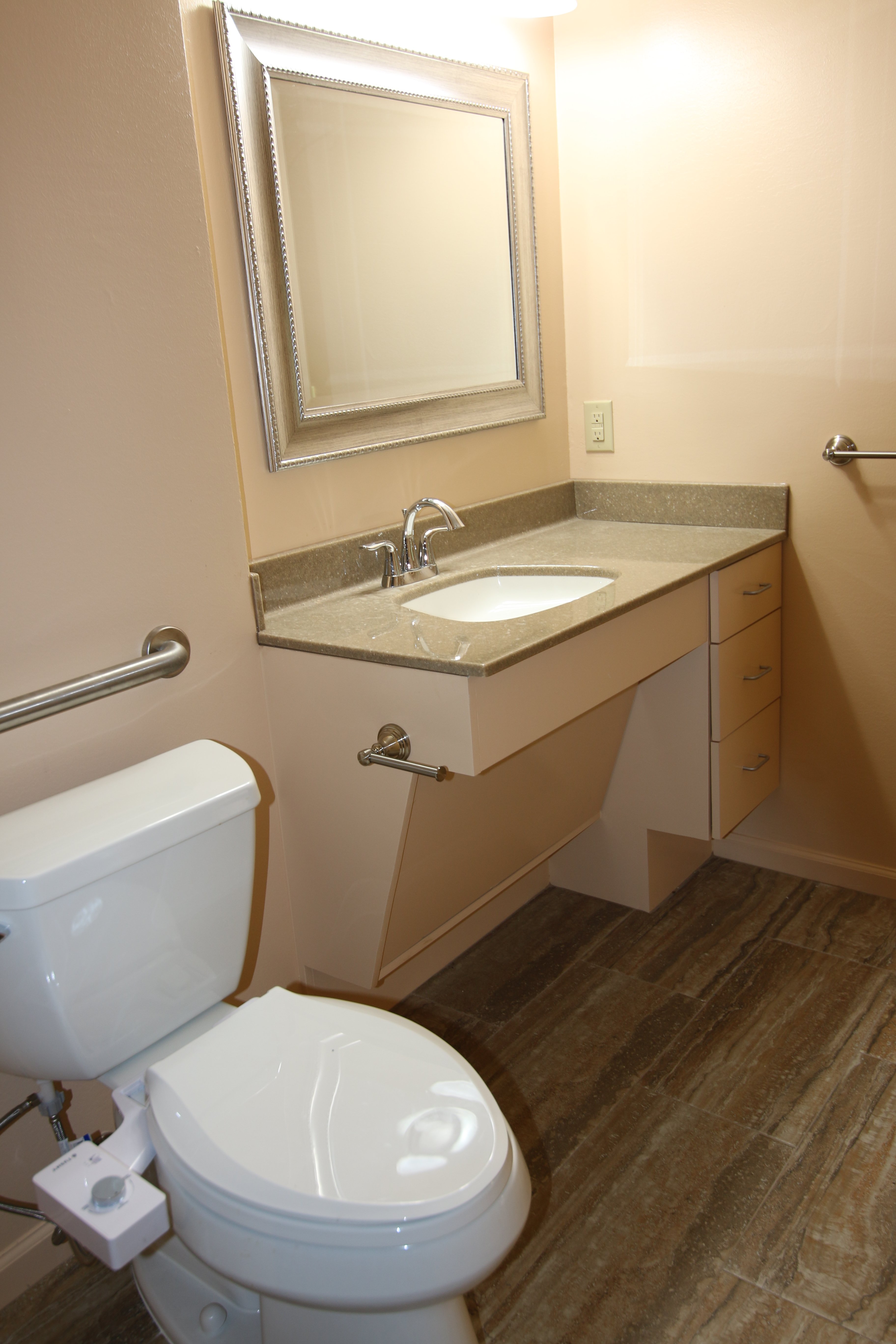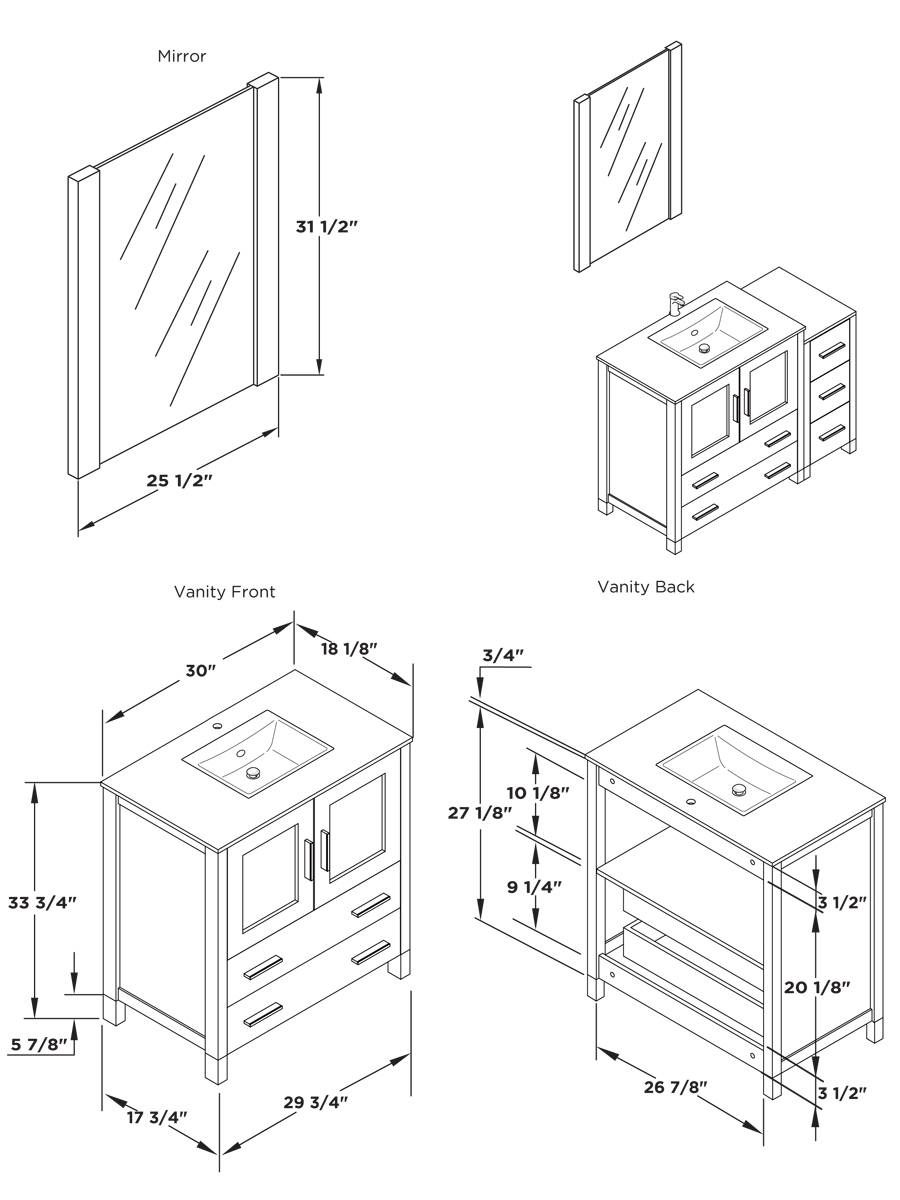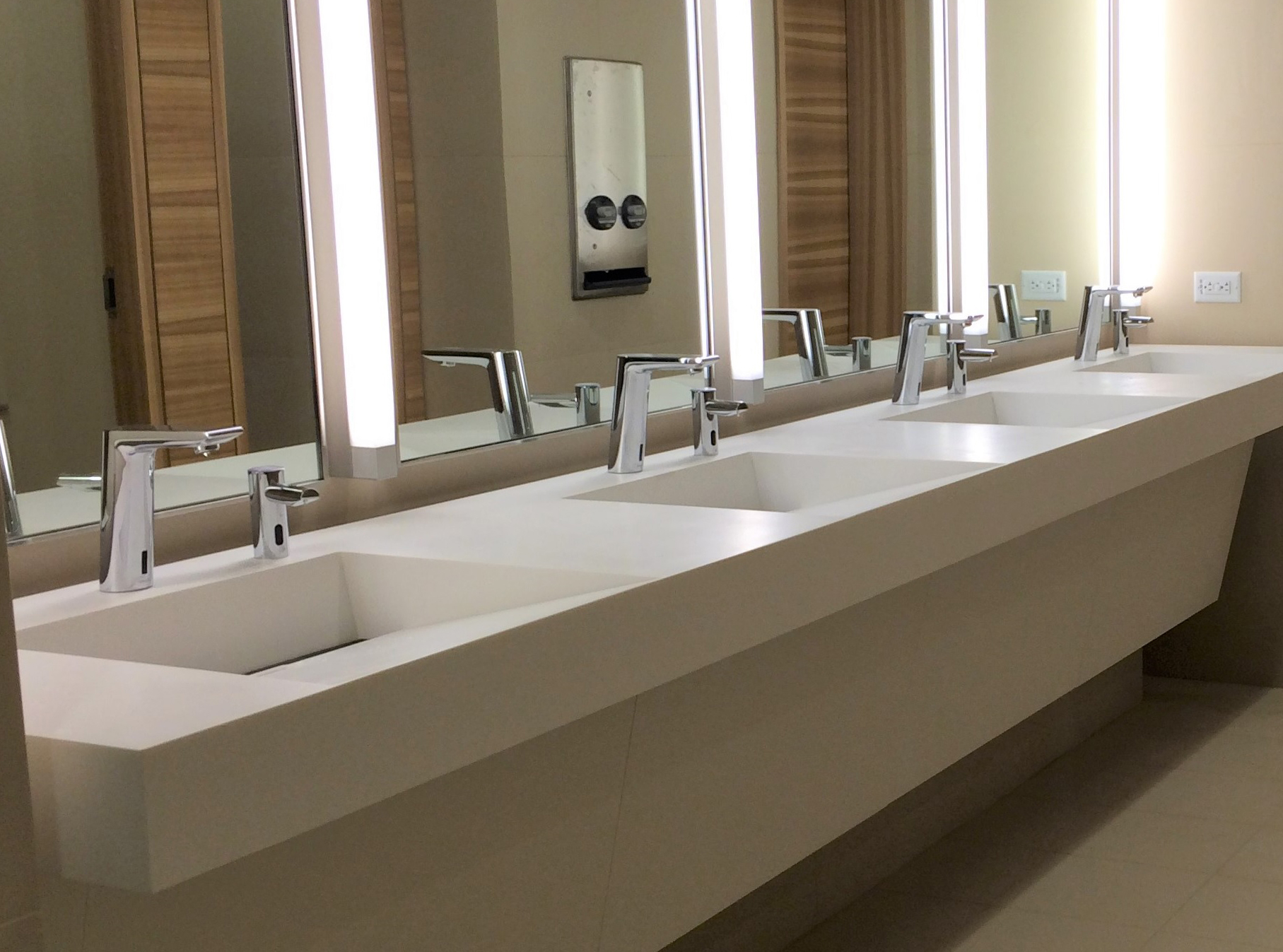When designing or renovating a bathroom, it's important to consider the needs of all individuals who will be using it. For those with disabilities or limited mobility, adhering to ADA bathroom vanity requirements is essential. These guidelines ensure that everyone, regardless of their abilities, can use the bathroom safely and comfortably. ADA Bathroom Vanity Requirements
An ADA compliant bathroom vanity is one that meets the requirements set by the Americans with Disabilities Act (ADA). This law requires certain accommodations to be made in public spaces, including bathrooms, to ensure accessibility for individuals with disabilities. In terms of bathroom vanities, this means adhering to specific height, clearance, and design standards. ADA Compliant Bathroom Vanity
The height of an ADA bathroom vanity must be between 29 and 34 inches from the floor to the top of the countertop. This range allows for individuals using a wheelchair to comfortably access the sink and countertop without having to reach up or down. Additionally, the sink should not be more than 34 inches from the floor, and the clearance underneath the sink should be at least 27 inches high. ADA Bathroom Vanity Height
In addition to the height requirements, ADA bathroom vanities must also adhere to specific dimensions. The countertop should be no more than 34 inches high and 30 inches wide. This ensures that individuals using a wheelchair can comfortably reach the sink and use the vanity without any barriers. The sink itself should also not be more than 6.5 inches deep to allow for easy access. ADA Bathroom Vanity Dimensions
Clearance is an important aspect of ADA bathroom vanity requirements, as it allows individuals using a wheelchair or mobility aid to maneuver around the vanity with ease. The ADA requires a minimum of 30 inches of clear floor space in front of the vanity to allow for wheelchair access. Additionally, there should be at least 18 inches of clear space on either side of the vanity for individuals to transfer from their wheelchair to the vanity. ADA Bathroom Vanity Clearance
The type of sink used in an ADA compliant bathroom vanity is also important. The sink should not have any barriers that could obstruct a person's use, such as a bottom cabinet or storage underneath. Instead, a wall-mounted or pedestal sink is recommended. The faucet should also have lever-style handles, making it easier for individuals with limited hand dexterity to use. ADA Bathroom Vanity Sink
Mirrors are an important aspect of any bathroom, but they can be problematic for individuals with disabilities if not placed correctly. ADA bathroom vanity requirements state that mirrors should be hung no higher than 40 inches from the floor, and should have a bottom edge that is no higher than 35 inches. This allows individuals using a wheelchair to easily see themselves in the mirror. ADA Bathroom Vanity Mirror
In addition to lever-style handles, the ADA also recommends that the faucet on an ADA compliant bathroom vanity be easy to reach and use. This means that the faucet should be no more than 44 inches from the floor, and the controls should be able to be operated with one hand and without tight grasping, pinching, or twisting. This ensures that individuals with limited hand mobility can use the faucet comfortably. ADA Bathroom Vanity Faucet
Storage is an important aspect of any bathroom, but it can present challenges for individuals with disabilities if not designed correctly. ADA bathroom vanity requirements state that any storage underneath the sink should not interfere with the required clearance space. This means that any bottom cabinets or shelves should not extend beyond the 27-inch clearance underneath the sink. ADA Bathroom Vanity Storage
When it comes to ADA bathroom vanity design, functionality and accessibility should be the top priorities. However, this doesn't mean that style and aesthetics have to be sacrificed. There are many modern and stylish options available that also adhere to ADA requirements, such as wall-mounted vanities and pedestal sinks. By choosing the right design, you can create a beautiful and accessible bathroom for all individuals to enjoy. ADA Bathroom Vanity Design
The Importance of Meeting ADA Bathroom Vanity Requirements
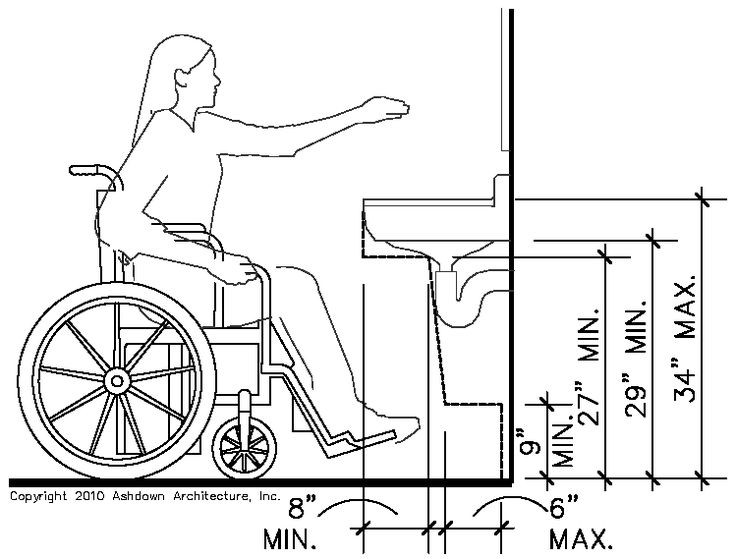
Creating an Accessible and Inclusive Design
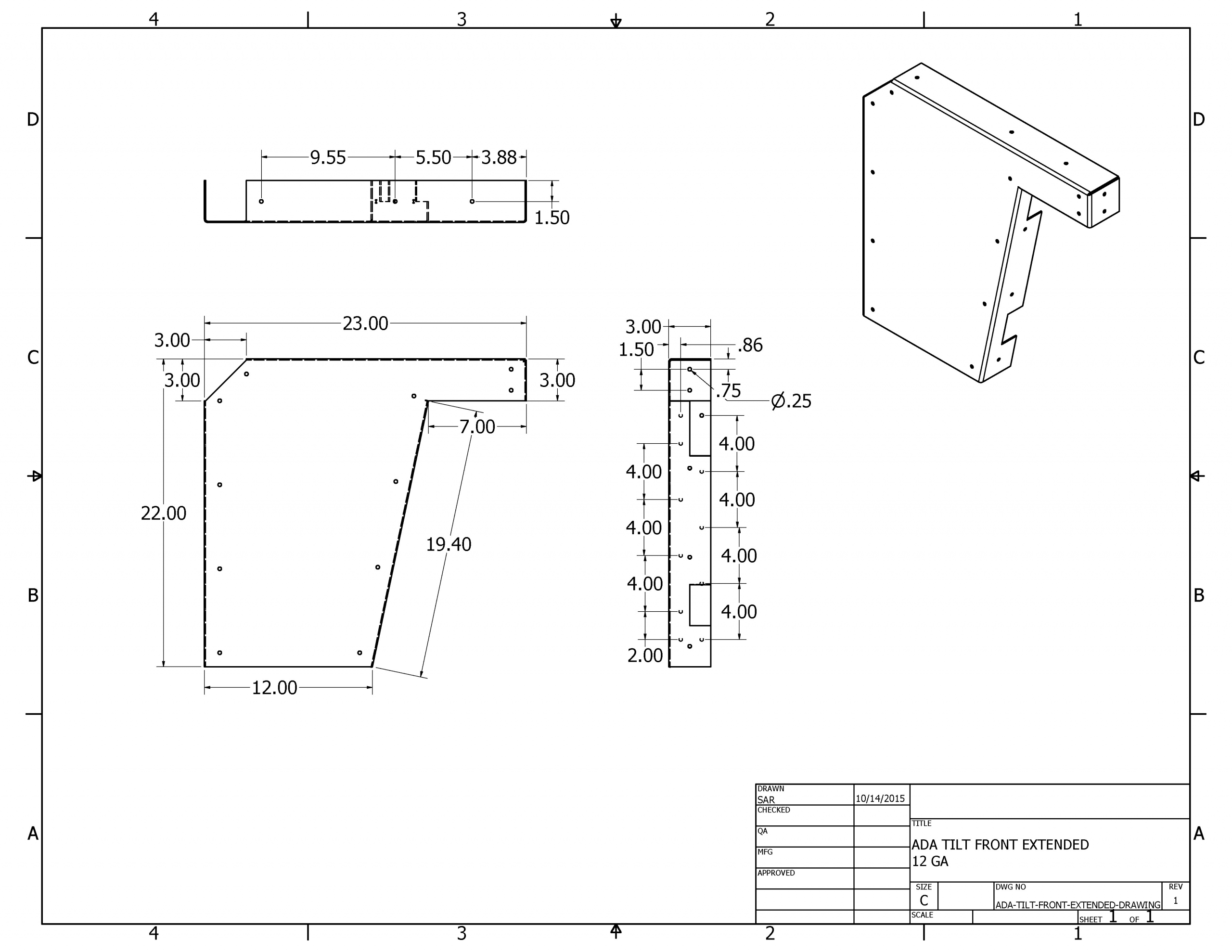 In recent years, there has been a growing awareness and emphasis on creating accessible and inclusive spaces for individuals with disabilities. This includes not only physical accessibility but also the design and layout of common spaces, such as bathrooms. As a result, the Americans with Disabilities Act (ADA) has set specific requirements for bathroom vanities to ensure that they are usable for everyone.
In recent years, there has been a growing awareness and emphasis on creating accessible and inclusive spaces for individuals with disabilities. This includes not only physical accessibility but also the design and layout of common spaces, such as bathrooms. As a result, the Americans with Disabilities Act (ADA) has set specific requirements for bathroom vanities to ensure that they are usable for everyone.
Promoting Independence and Dignity
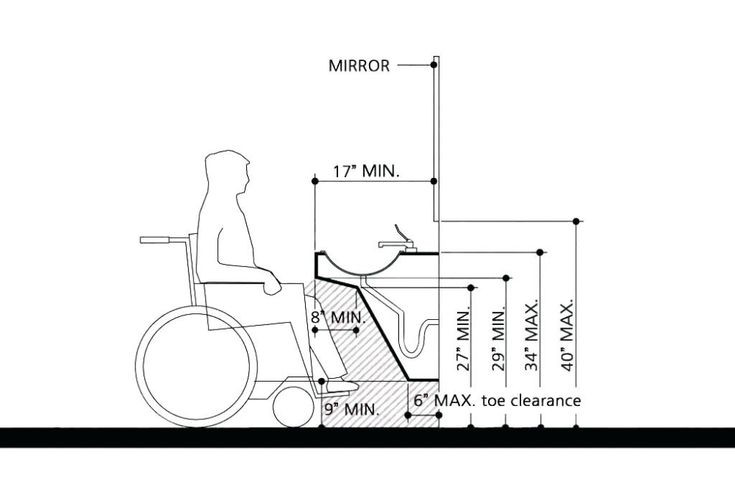 One of the main goals of the ADA is to promote independence and dignity for individuals with disabilities. This means providing them with equal access to facilities and amenities, including accessible bathroom vanities. By meeting ADA requirements, you are not only following the law but also promoting a more inclusive and welcoming environment for all individuals.
One of the main goals of the ADA is to promote independence and dignity for individuals with disabilities. This means providing them with equal access to facilities and amenities, including accessible bathroom vanities. By meeting ADA requirements, you are not only following the law but also promoting a more inclusive and welcoming environment for all individuals.
Ensuring Safety and Functionality
 Another important aspect of meeting ADA bathroom vanity requirements is ensuring safety and functionality. These requirements are put in place to prevent accidents and injuries, as well as to make the vanity easily usable for individuals with different abilities. For example, the height and depth of the vanity, as well as the placement of the faucet and controls, are all carefully considered to make sure they can be reached and operated by someone in a wheelchair or with limited mobility.
Another important aspect of meeting ADA bathroom vanity requirements is ensuring safety and functionality. These requirements are put in place to prevent accidents and injuries, as well as to make the vanity easily usable for individuals with different abilities. For example, the height and depth of the vanity, as well as the placement of the faucet and controls, are all carefully considered to make sure they can be reached and operated by someone in a wheelchair or with limited mobility.
Complying with Legal Obligations
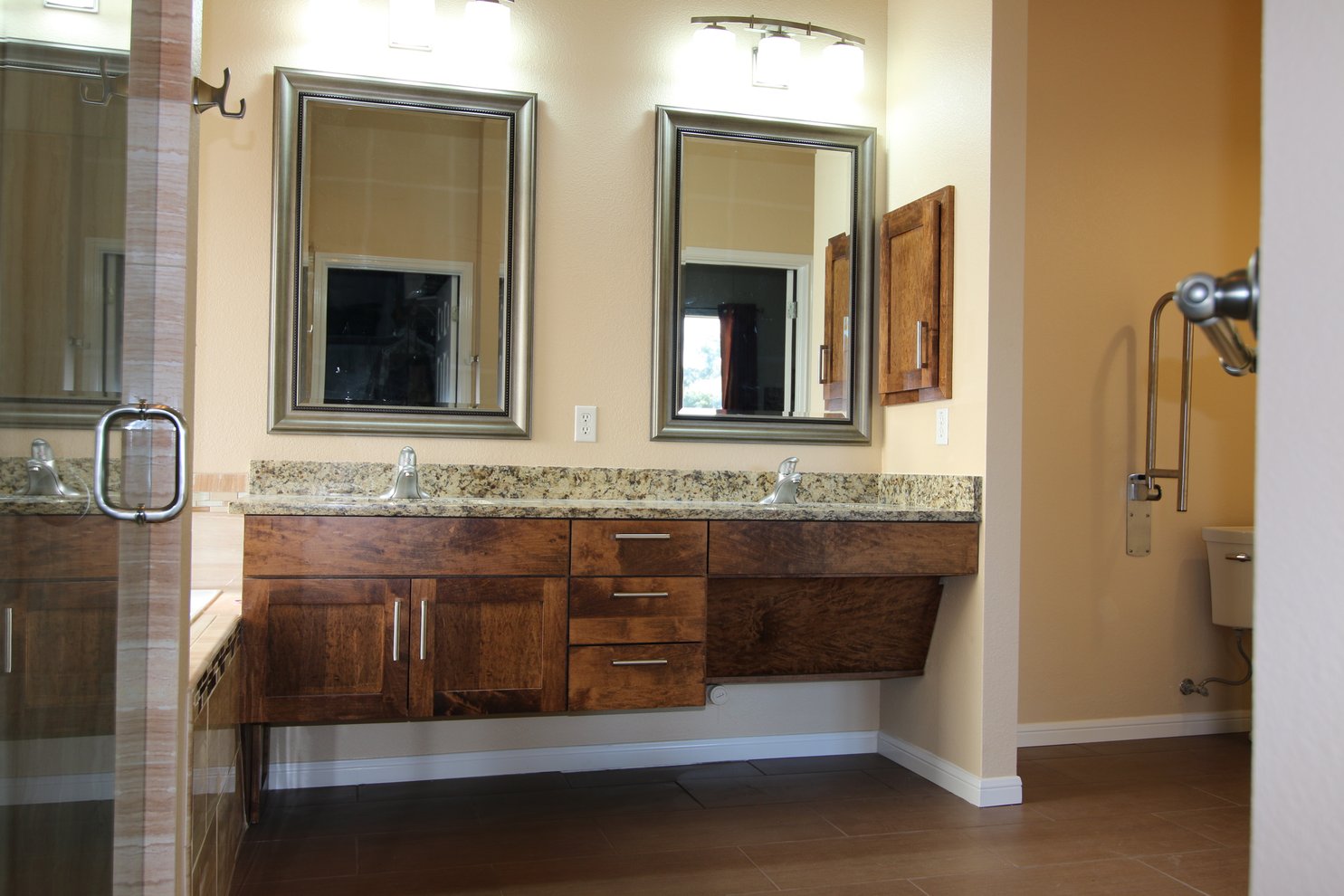 Finally, it is crucial to meet ADA bathroom vanity requirements to comply with legal obligations. Failure to do so can result in fines and legal consequences. It is important to note that these requirements are not just suggestions, but are mandatory for all public and commercial spaces. By following these guidelines, you are not only creating a more inclusive space, but also avoiding potential legal issues.
In conclusion, meeting ADA bathroom vanity requirements is not only necessary for legal compliance, but also for promoting inclusivity, independence, and safety. As you design and plan for your bathroom, make sure to carefully consider these requirements to ensure that your space is accessible and welcoming for all individuals.
Finally, it is crucial to meet ADA bathroom vanity requirements to comply with legal obligations. Failure to do so can result in fines and legal consequences. It is important to note that these requirements are not just suggestions, but are mandatory for all public and commercial spaces. By following these guidelines, you are not only creating a more inclusive space, but also avoiding potential legal issues.
In conclusion, meeting ADA bathroom vanity requirements is not only necessary for legal compliance, but also for promoting inclusivity, independence, and safety. As you design and plan for your bathroom, make sure to carefully consider these requirements to ensure that your space is accessible and welcoming for all individuals.


